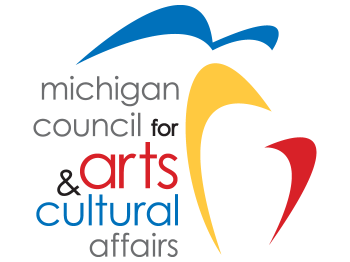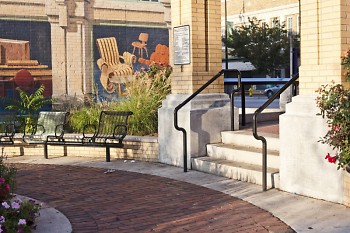Written by Kris Larson
Downtowns across the country, including Grand Rapids, have seen a remarkable resurgence of investment and utilization over the past 20 years. National trends in population growth have since confirmed that urban areas are now growing faster than their suburban and rural counterparts - a dynamic we haven't seen in more than a century. For the first time since Henry Ford rolled out the primary agent of suburbanization, population growth between urban and suburban areas has reversed. Evidently, something we urbanist types were doing worked - even if the outcomes of today are only spuriously caused by the ideas of yesterday.
When I started my career in the downtown management field more than a decade ago, marketing strategies and messaging were much different than today's. Other than a pioneering pro-urban contingent, efforts were focused on winning back the denizens who had turned their backs on downtown and retreated to the suburbs. Cloaked under the auspices of rediscovery, the thinking at the time was not wholly unlike the intention of urban renewal: we sought to make our downtowns more like the suburbs such that the middle class could be lured back. We thought we needed to convice them to care about the health of our civic centers. To do so, poverty was to be masked, or somehow designed out. Much like the partitions in benches meant to prevent a person from lying down, our downtowns needed to be aesthetically modified so that the rediscovering masses felt as comfortable in downtown as they did in their suburban neighborhoods. Looking back, we now regard this approach as "designing out of fear."
Granted, downtowns were crawling out of differing levels of despair. Each was compelled to retrofit scars to their built environments delivered courtesy of indiscriminate federal redevelopment subsidies. They were generally unprepared and unwilling to exercise the patience and competency needed to amend decades of classicism and redlining. Gentrifying forces were no longer as patient as they were during the artist-driven real estate renaissance in SoHo, due in part to capital pouring in courtesy of immense speculation, a cavalier finance environment, and most important social trends that began to favor cultural urbanity rather than the archetypal American Dream. Reinvestment was on, and prodigal American citizens were coming face to face with the realities of the publicized gap between comfortable and poor. For many, the jarring realities produced both discomfort and dismay. While the benches outside our buildings were theoretically appropriate within good streetscape design, we were less concerned with the design of the bench, its orientation or even comfort. The focus was a fear of use - and by whom.
There is a fundamental difference between the suburban malls that "design out of fear" tried to copy, and our city spaces like Rosa Parks Circle. One is privately owned, but the other is owned by the community. In community-owned spaces, people have rights to that space- which creates opportunity for expression, creativity and growth. We cannot try to control behavior for the sake of commercial activity. Instead we welcome chance encounters, perspective-altering experiences and the types of challenges that keep our minds present.
These spaces become gathering places for civic identity and pride, places where people, ideas and opinions intersect to help move forward public discourse and discovery.
Even as a zealot of downtown planning, I've come to realize the process of building a vibrant downtown is not solely about convincing poeple to come back. It is not merely an attempt to recreate a downtown that exists in the revisionist memories of the now-retiring generations. There is now a trend in population shift. While a subset of empty nesters helped to fuel the resurgence in downtown living, a substantial portion of the trend is due to Millenials (those born between 1980 and 1998) intentionally seeking an urban alternative to the safe, suburban environments of their childhoods. Some estimates show that 77% percent of Millenials would prefer to live in an urban environment- and 53% eschew the form of transportation that Michigan gave to the world. Ten years ago, we had no way of knowing that this generational dynamic would bolster our cause.
Most of these young adults have a perspective of their downtowns that we can only imagine. Many of the Millenials have never thought of their downtowns as unsafe or unattractive places. Even during their formative years, downtowns were welcoming waves of investment and winning back a place in the hearts of their parents. This generation is filling downtown apartments, cafe chairs and bar stools. Attracting and retaining this gereration has emerged as a crucial business strategy for employers who cherish their creativity, perspectives and their modern quest for authenticity and purpose.
It is time to change our conversation from designing out of fear and begin designing for us - the collective us. Not just the Millenials, but the community at large. We can no longer afford to think about the future of our downtown for any particular group. Instead, we must think about building a downtown for the future. We need to consider needs and preferences different than our own. We need to include both those with the access and resources to shape decisions, and those who have historically been left out of the conversation. We need the full community, and that includes those who look differently, think differently, worship and play differently. Our community is all of these things and more, and our downtown should be designed to be approachable to and loved by all.
Our new organization Downtown Grand Rapids Inc. (DGRI) seeks to serve as a medium for engaging the community at large to help make that possible. DGRI is meant to give you, the community, a voice in the conversation about our downtown's future. Whether you want to help us select a feature for the Movies in the Parks series, discuss the ideal lighting scheme for the next chapter of the Blue Bridge or weigh in on the appropriate height for river adjacent skyscrapers- we'd love to hear your thoughts.
We don't fear your thoughts. We welcome them. There are no partitions here.
The Rapidian, a program of the 501(c)3 nonprofit Community Media Center, relies on the community’s support to help cover the cost of training reporters and publishing content.
We need your help.
If each of our readers and content creators who values this community platform help support its creation and maintenance, The Rapidian can continue to educate and facilitate a conversation around issues for years to come.
Please support The Rapidian and make a contribution today.




Comments
It needs to start with available living. Right now, a college student can live with a bunch of friends in a nice house and fill 4 rooms to split rent easily, or their income is low enough to apply for some of the income based housing. Otherwise you have “market rate housing” which is 100%+ higher rent for less space than apartment complexes within 5 minutes from downtown on the edge of the city limits. 3 years out of college and with a decent job in downtown GR I would kill to be able to move into the downtown area and spend my money, but I make just over the “income limit” most of the newer income based housing and significantly less than it would take for me to afford “market rate”. In fact, my rent would go up 80-100% if I rented a like-sized apartment (or smaller) in the “downtown” area. There goes any discretionary funds I might have and strips any reason to move downtown. This is a huge hole in available housing downtown and will continue to be the reason MANY millennials prefer to live on the outskirts and commute to their jobs downtown. I would rather pay the meter money, taxi fares, and parking rates than commit the lion’s share of my discretionary funds toward renting a space barely better than what I have. Downtown is practically inaccessible if you are an entry level (1-3 years) college graduate.
Kris,
thanks for your insight on this. Your hope to include "those with the access and resources to shape decisions, and those who have historically been left out of the conversation" is wonderful and I commend you for it.
It seems to me however, that when you speak of this new found millenial-driven interest in urban living, you are speaking of young, white, twenty-somethings who grew up in sterile, suburban neighborhoods. I would argue that this population already has the attention of downtown developers, and that if we are truly to create a downtown community that welcomes everybody we should shift that attention to those who really are being left out of the conversation.
My impression of the development of downtown and it's surrounding areas (especially the Wealthy St. corridor) is that thus far it has been driven by the desire to meet the consumer demands of white millenials with little to no regard for people of color.
So while I love your vision for inclusion, I am hesitant to engage because even this vision of inclusion seems to be tainted by race. Grand Rapids has for too long touted a desire for inclusion but failed to actually do anything about it.
Any thoughts on this?